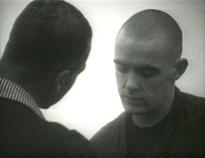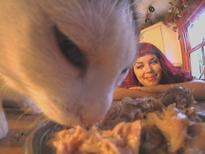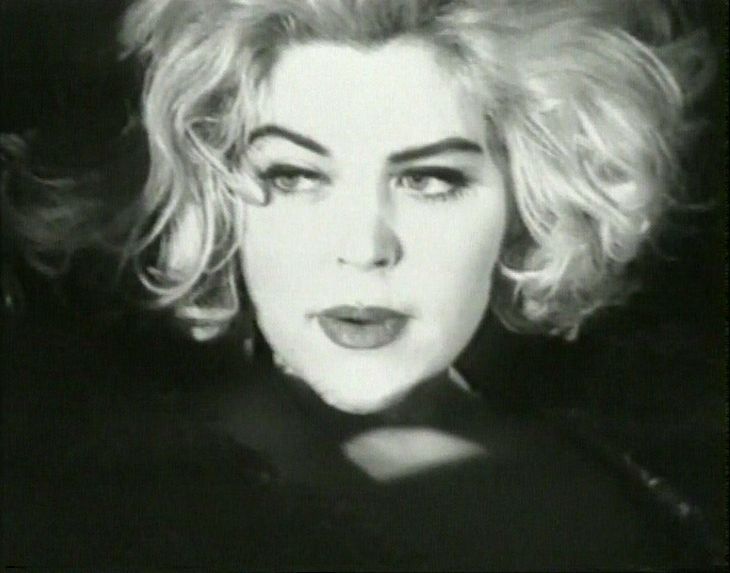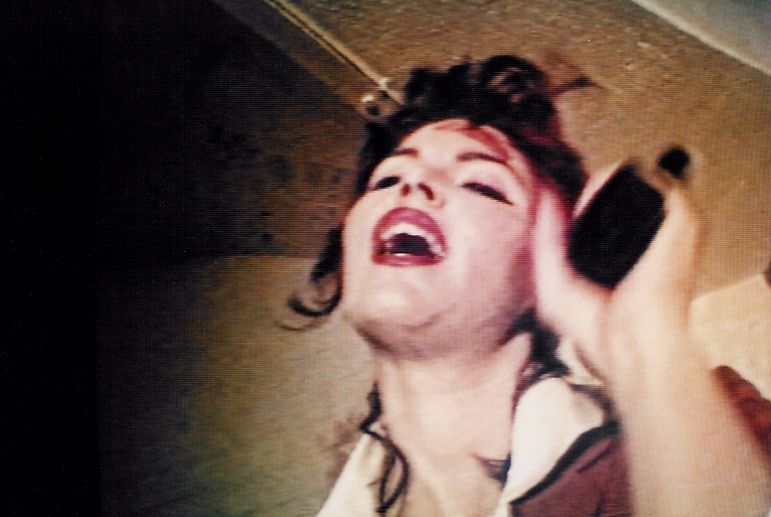ALISON MURRAY
In her videofilms Alison Murray combines choreography with cinematography and a sensitivity for social themes. In her hands this ensemble of factors becomes a rusty knife with which she attacks the stereotypical classification of the individual and attempts to unravel codes of behaviour. As a rebellious teenager Alison Fairweather Murray escaped at the age of fifteen from Canada to London where she studied dance and theatre followed by film directing (until 1995). Since 1992 she has made short films which received an honourable mention at various festivals. Currently she also makes full-length feature films, works for television, writes libretto’s and choreographies for The Royal Opera House in London and designs videos for clubs.
Alison Murray’s oeuvre is based upon personal experience and is formally located between experimental cinema, the music video, video art and narrative film. In terms of content she allies herself to ’new queer cinema’ in the pure sense of the word: with her work she does not defend or illustrate a certain orientation, but a complete mentality, attitudes and forms of behaviour that develop themselves contrary to what is accepted as the norm in our present times. Murray is a self-proclaimed feminist. Her work however reaches far beyond women’s issues: the Canadian-British artist manifestly distances herself from anything that is classified and stereotyped for the sake of ease in a generalising manner by the general public. She doesn’t shy away from tackling ’sensitive’ issues: the differences between white and black, male and female, young and old, pop and politics, private and public, fantasy and reality. Moreover she outspokenly disregards ’good’ taste with her videos. She consciously hovers at the boundary of the grand guignol, which gives her great impetus. In this way women insult the camera in foul language (Kissy Suzuki Suck, 1992), macho’s play leapfrog on the beach (Wank Stallions , 1993) or women murder all their colleagues because they are annoyed by their periods (Bad Mood Woman, 1995).
With a constant basis of a threatening ground, Murray’s highly charged videos present themselves as funky, hypnotic, amusing or disturbing. The artist found a first major inspiration for her work in choreography and in particular dance and performance. In this way the characters in her films carry out a language of movement that is parallel to contemporary dance. Murray’s works of scenography serve the end, the narrative and theme of the work in question, but also reserve a wide margin for improvisation and input by the actors. Murray finds a second major source of inspiration in popular culture: she collaborates with house-icons Coco Steel and Lovebomb, makes references to the reports of Hunter S. Thompson and situates her direction (of images) in post-modernism. In this way Murray makes use of jumbled narrative structures, inversions and characterswapping (including gender-bending). Moreover, she fearlessly handles the camera that the subjectmatter ’expects’, nearing the norms of a stereotypical camera-use but with a high dose of tongue-in-cheek. For example, with intimate subjects, the artist scrutinises her actors in close-up; in her anti-commercials she uses short sequences, loose shots in-between and quick editing, whereas she chooses a realistic, distant camera-use when she wants to convince the viewer of her opinions. Overacting, over-direction and an over-emphasis of the images through the soundtrack regularly appear, variables which are also commonly found in cult-films.
Despite her play with conventions and a narrative line, and despite the raw brutality of the images, Murray never slips into voyeurism. In her videofilms she pays fundamental attention to her characters; the elaboration of their viewpoints is the aim of the work. The architecture of the city context surrounding her characters plays an important role in this: her ’incorrect’ characters are meticulously painted surroundings that influence them. Summarised, Murray’s videos find themselves both figuratively and literally on the edge: in an acutely perceptive direction (of images) she dissects stereotypical representations, codes of behaviour and the classification of the individual, in the meantime kicking against the taboo.




- ° 1970 Nova Scotia (Canada). Lives and works in London.
-
Links
-
EVENTS
-
At view in the media library
WORKS